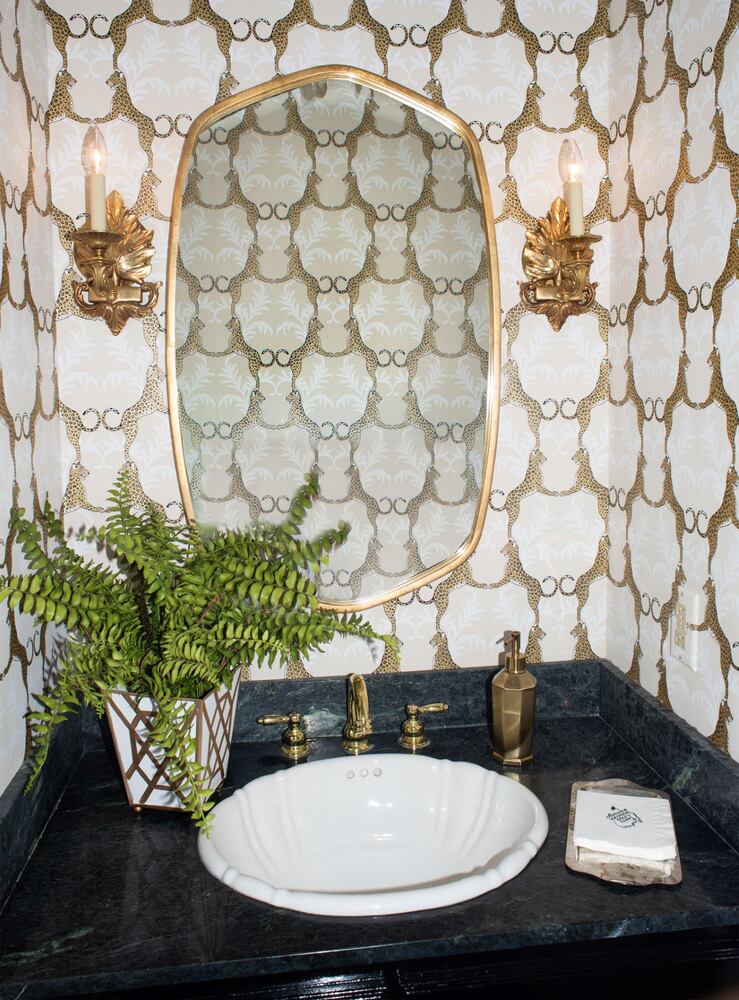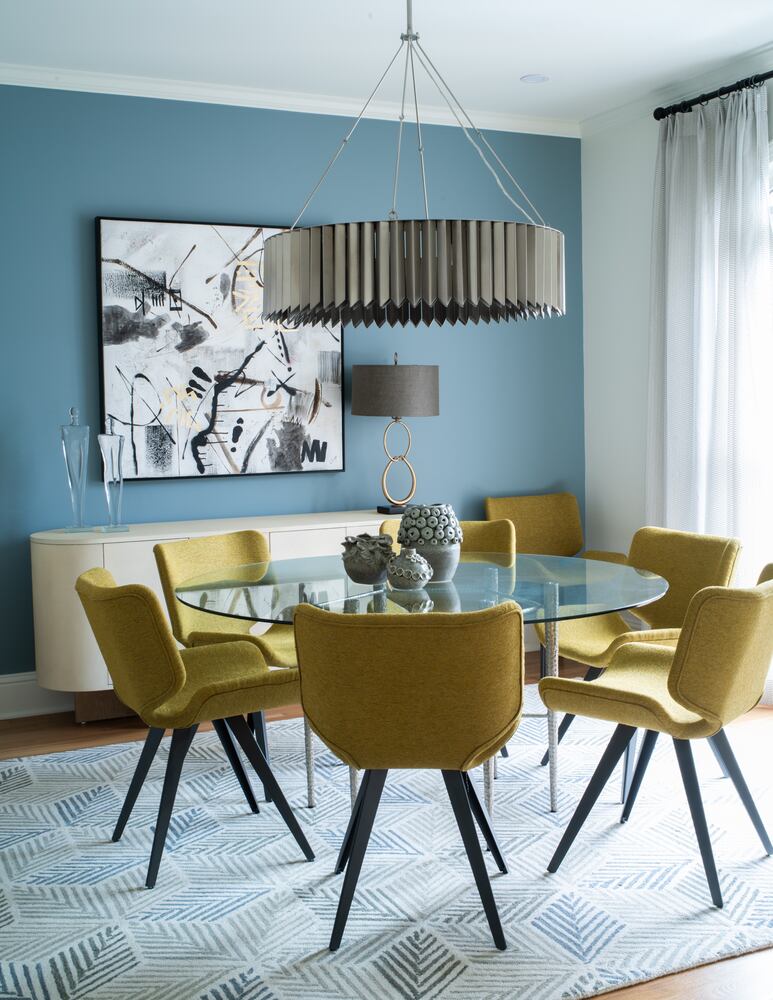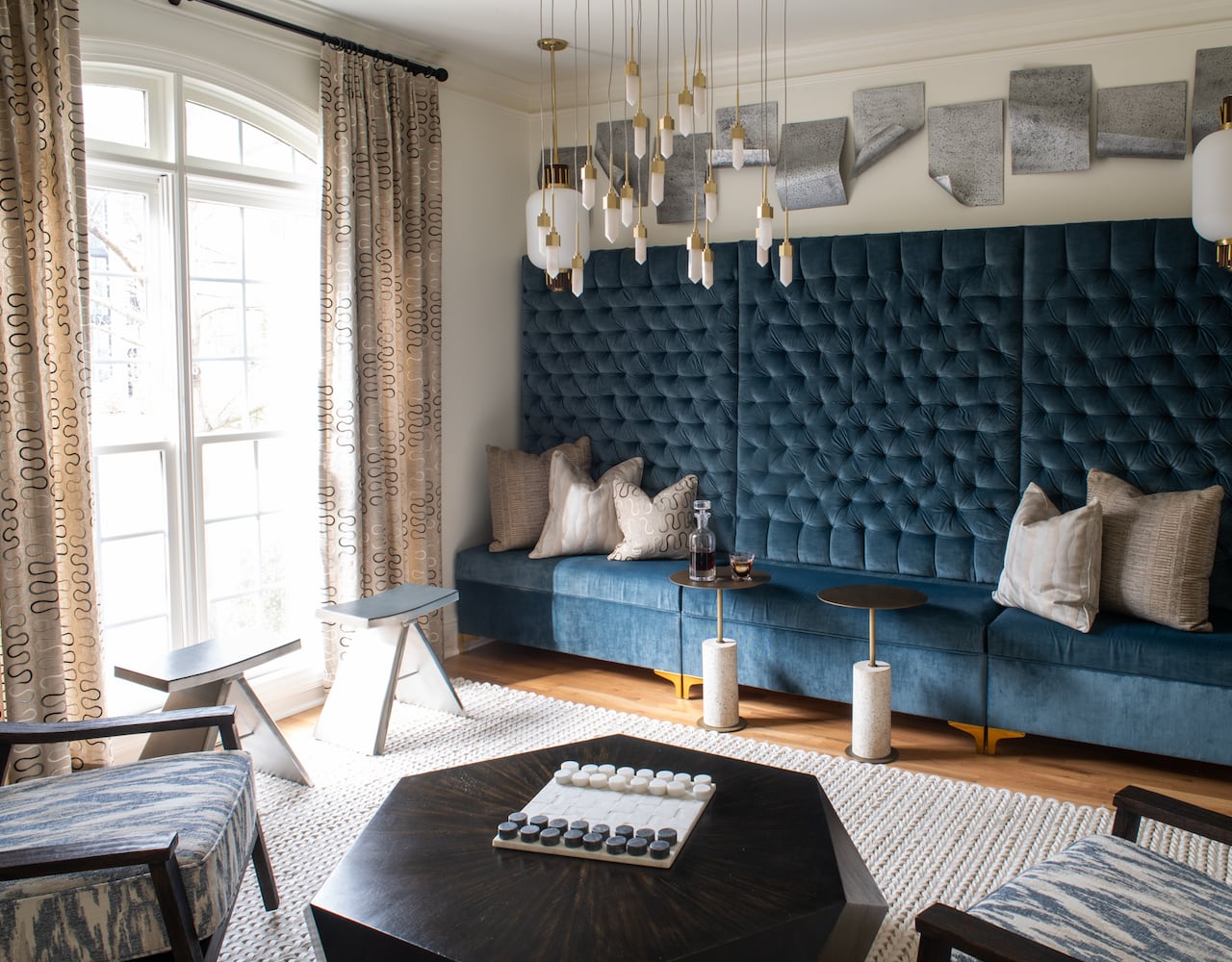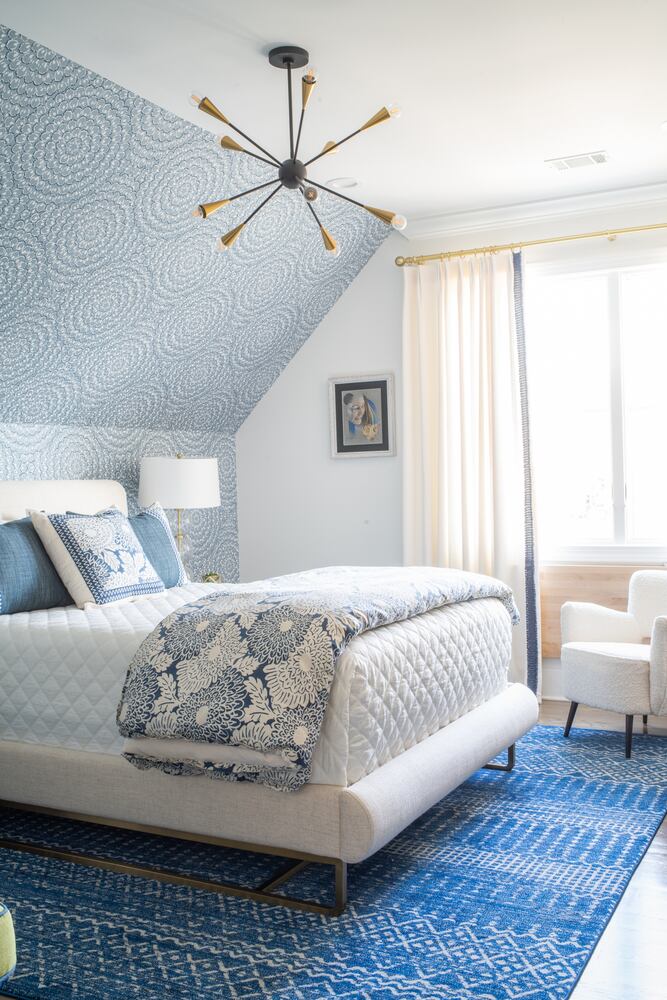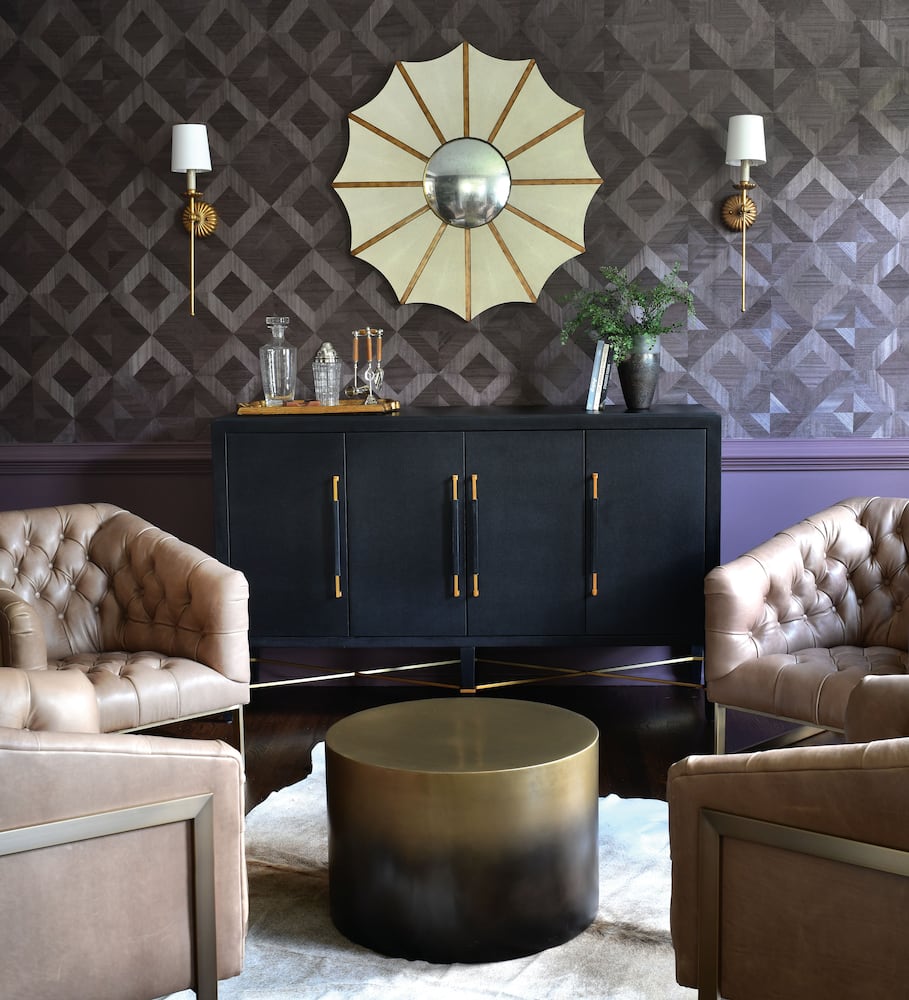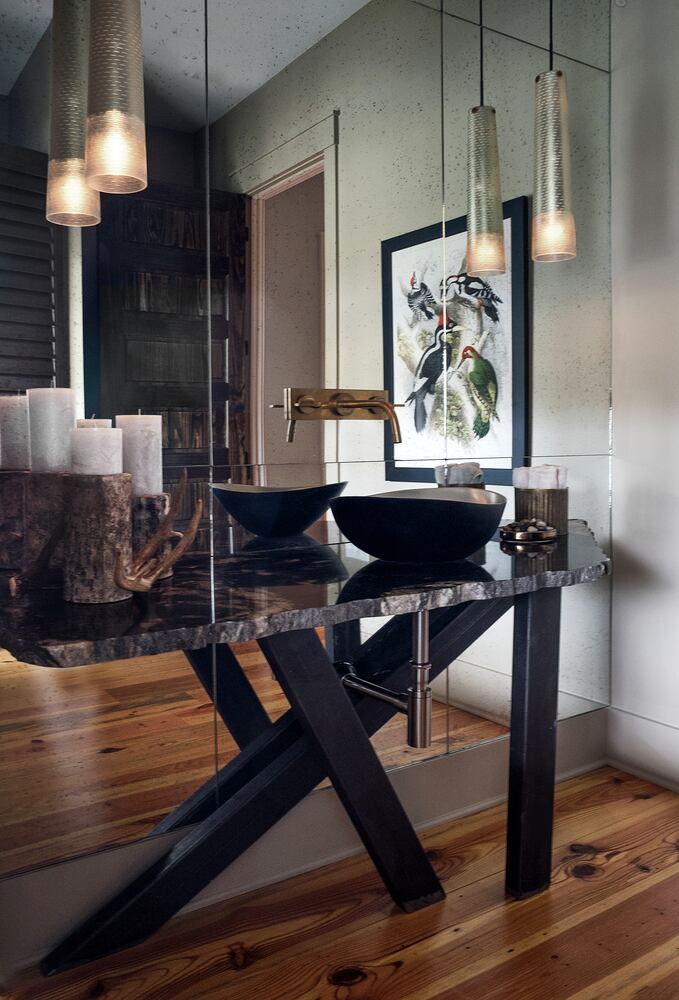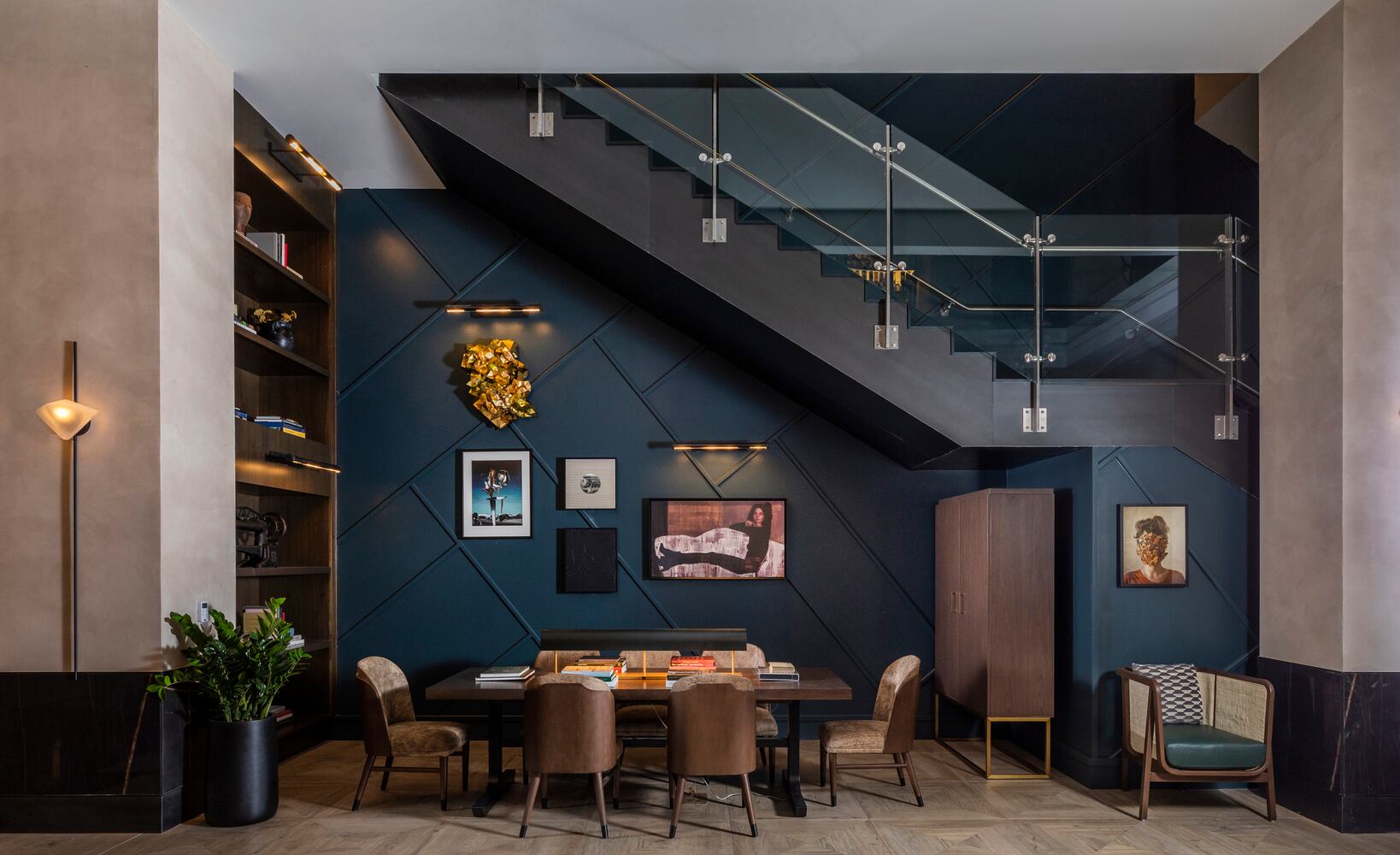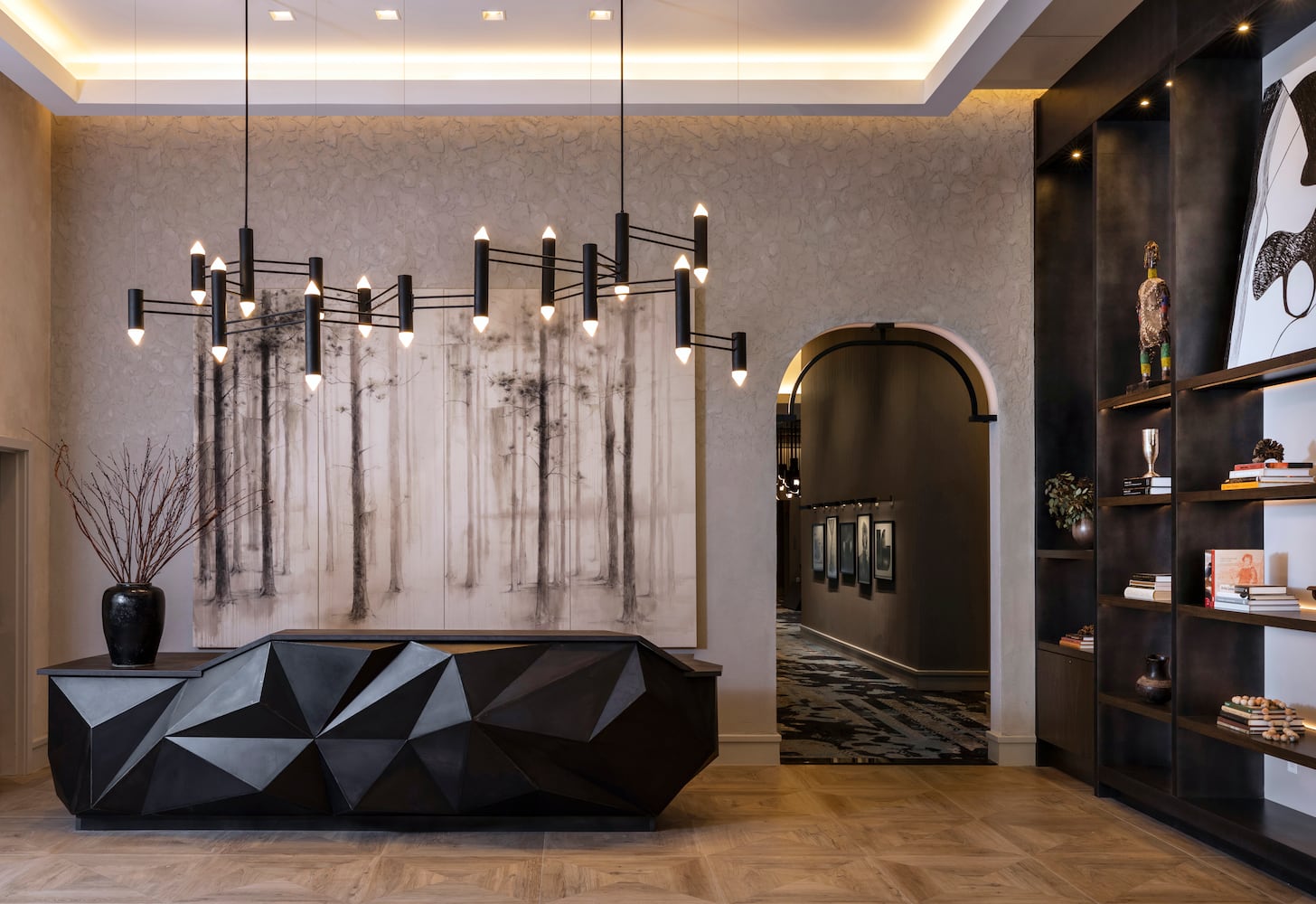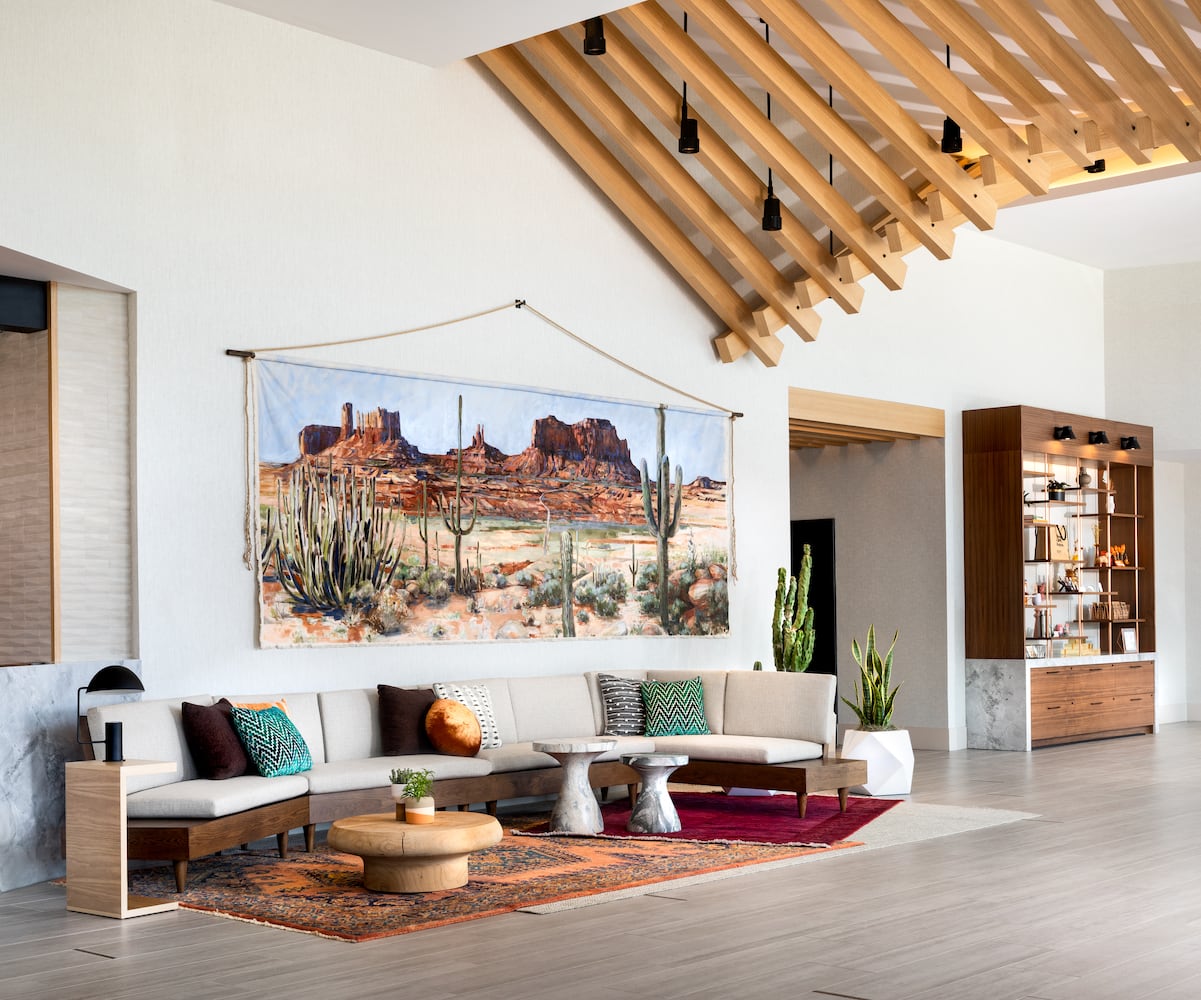While many of Atlanta’s homeowners would certainly love to upgrade to a roomier house, big real estate decisions are simply not the in cards for most. Prices are up, mortgage rates are up and inflation is high.
All the same, homeowners can still make their interiors feel larger with the right changes. It’s something Atlanta’s Nandina Home and Studio 11 Design have been doing all over Georgia’s capital city.
Why small room design matters
Credit: Shelly Marshall Schmidt
Credit: Shelly Marshall Schmidt
“While size does matter with respect to interior design, as a professional focused on interiors rather than a room’s architectural design you often find yourself working with challenging layouts and spaces,” Studio 11 Design founder Kellie Sirna told The Atlanta Journal-Constitution. “Because of this it’s incredibly important to understand proportions as well as the impact of furniture, art and accessories on a space.”
To Sirna, it all comes down to proportions.
“Creating the illusion of more space requires an understanding of proportion,” she said. “By that I mean being able to take stock of a space’s architectural layout and then work within those dimensions to generate a sense of flow and openness contextual to the room. For example, there’s no sense in trying to make a den or home office feel like a grand ballroom!
“When designing for clients, whether it be homes or hotels, I like to juxtapose the intended function of a room with its architectural proportions and from there look to how I can maximize flow and light, which are crucial to making spaces feel appropriately sized. Sometimes it’s about opening up a layout to emphasize space, other times I like to create a multitude of nooks and artfully sectioned off areas that conjure similar feelings but through a variety of seating options.”
Nandina Homes told The Atlanta Journal-Constitution that the smaller living spaces in your home may have some of the highest potentials when it comes to new design projects.
“I love the challenge of designing a small space because it often results in a ‘big’ design impact,” a representative said. “Embracing the size of the room and playing to the strengths of a smaller space can provide a surprising element of creativity that are more difficult to achieve in larger areas. You can go a little overboard with luxury and it doesn’t kill your budget, like expensive wallpapers, hand knotted rugs, glamorous high end lighting. I think of small spaces as little jewel boxes of rooms, that open to reveal a wealth of design gems.”
Where to begin
Credit: Jenifer Baker
Credit: Jenifer Baker
Start with your living room or your dining room, if you regularly host functions. That way, you can make the most out of your next project.
“When looking at what rooms most need to be maximized spatially I always recommend starting with areas of congregation first,” Sirna said. “Rooms in which you host functions are the first to feel small... To do this, there is no need to knock down walls or combine rooms, particularly if you’re on a budget. Instead you can often enhance a room’s size and optics through decluttering as well as the integration of appropriately sized art and furniture pieces.
“Art specifically is where I see many errors made with respect to elevating rather than detracting from a room’s proportions. For example, incorporating a very large wall piece into a smaller space is only going to emphasize that lackluster size rather than distract from it.”
Alternatively, Nandina Home suggested using any guest rooms as blank canvases for your next project.
“The first room that comes to mind is the main powder room in a home,” the design firm said. “Also small guest rooms can be made to feel like high end hotel rooms with creative use of drapes and a great bed and bedside tables only. A small dining area can be transformed with banquet seating and beautiful lighting.”
How to design on a budget
Credit: Shelly Marshall Schmidt
Credit: Shelly Marshall Schmidt
When it comes to making your living spaces feel larger on a budget, the first thing you are going to want to do is declutter.
“Eliminating clutter is one of the easiest and most affordable ways to create the illusion of more space,” Sirna said.
“Another great way to make a room feel larger can be through color. A common misconception is that darkly painted walls create a ‘shrink effect’ and make a room appear smaller than it actually is. Dark colors, or dark wallpaper, actually do the contrary and can help elevate the stature of a room by making it feel more sophisticated and daring from a design perspective.”
According to Nandina Home, depending on your living situation, you may be able to eliminate your dining table all together to create more spaciousness within the home.
“In smaller condos or apartments eliminating a dining table and using a console on the back of a sofa,” they said. “Using counter stools or tall ottomans that slide under the table you can create an instant intimate dining space. If you have a small combination room (serves multiple purposes) consider using a banquet along a wall to add seating for a dining area which allows you to move the table closer to the wall. When using a banquet don’t be afraid to make it taller than you might first think, 6′ is not too tall in a small room, the scale makes the room feel larger.
“Use a larger rug in a smaller space – it actually will make the space look bigger. When adding window treatment, make them as long/tall as possible. Have them hang from the bottom of the crown molding if it exists, this is a great design tip, whether your ceilings are high or low. If you don’t have crown molding, take the drapes to ceiling – just make sure you leave enough room for your finials.”
Tips for those willing to break the bank
Credit: Courtesy of Thompson Savannah
Credit: Courtesy of Thompson Savannah
For those looking to make the most out of their living spaces no matter the costs, Sirna said that hiring a professional can make all the difference.
“In addition to architecturally opening up spaces, I recommend working with a professional to assess your furniture, art and accessories to ensure all are proportionally sized to the room,” the Studio 11 Design founder said. “Other great ways to conjure greater scale within a room without changing its dimensions are utilizing the walls as an additional art piece or focal point and drawing them into a space’s aesthetic in a more direct and compelling way. This can effectively be done by paneling the walls or designing built-in shelves, which can add visual interest.”
According to Nandina Home, a wall-sized mirror can do wonders.
“Mirror a whole wall or use amazing wall paper that is extravagant,” they said. “In a small bedroom, drape an entire wall or do a paneled wall for the head of a bed.”
About the Author
The Latest
Featured
